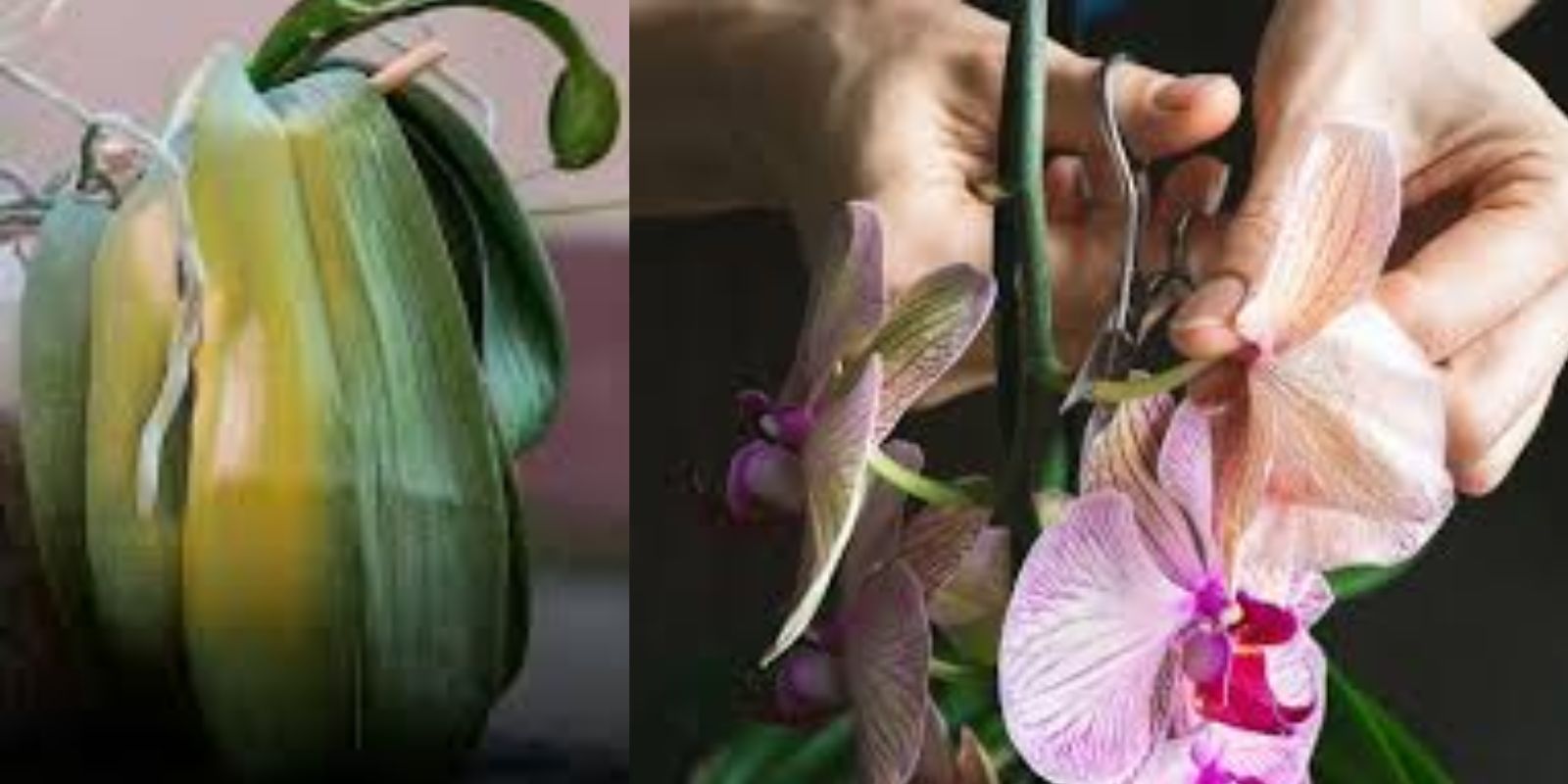Introduction
Orchids are often considered the crown jewel of houseplants, admired for their delicate, exotic beauty. Yet, they can be surprisingly temperamental, and a wilted orchid may leave even experienced gardeners feeling disheartened. However, there’s hope! With the right care and a special ingredient—used strategically—you can breathe life back into your orchid and enjoy its vibrant blooms once again.
In this guide, we’ll explore step-by-step how to revive a wilted orchid, what causes them to wilt, and how to prevent future issues. Orchids are resilient when given the proper care, so let’s dive in and save your plant!
Understanding Why Orchids Wilt
Before you begin the revival process, it’s essential to understand why your orchid is struggling. Some common reasons for wilting include:
- Overwatering: Orchid roots need airflow and can rot if left in overly damp conditions.
- Underwatering: If roots dry out completely, the plant becomes dehydrated.
- Poor Lighting: Too much direct sunlight can scorch leaves, while insufficient light stunts growth.
- Nutrient Deficiency: Orchids need balanced nutrition to thrive.
- Pests or Diseases: Fungal infections or pests like spider mites can weaken the plant.
By identifying the root cause, you can tailor your care to your orchid’s needs.
The Secret Ingredient to Revive Your Orchid
What’s the magic trick? It’s the use of natural antifungal and antibacterial agents like cinnamon powder or honey. Both substances are safe for orchids and help combat infections while encouraging healthy root growth.
Step-by-Step Guide to Reviving Your Wilted Orchid
Step 1: Assess the Plant’s Condition
- Check the roots: Healthy roots are firm and green, while unhealthy roots appear brown, black, or mushy.
- Inspect the leaves: Look for discoloration or drooping as signs of distress.
- Look for pests: Use a magnifying glass if needed to detect tiny intruders like mites or aphids.
Step 2: Remove Damaged Parts
- Use sterilized scissors to cut off wilted flowers, dead roots, and any yellowing or blackened leaves. This prevents further infection.
- Be gentle to avoid stressing the plant further.
Step 3: Prepare the Revival Solution
- Mix 1 teaspoon of cinnamon powder or honey in a cup of warm water.
- These natural remedies act as antifungal agents, protecting the remaining roots from rot and encouraging new growth.
Step 4: Soak the Orchid’s Roots
- Submerge the roots in the solution for 20–30 minutes.
- This rehydrates the roots while disinfecting them from potential pathogens.
Step 5: Repot in Fresh Medium
- Choose a fresh orchid-specific potting mix, such as bark or sphagnum moss.
- Use a pot with drainage holes to ensure proper airflow and avoid waterlogging.
- Place the orchid gently into the new pot, spreading the roots evenly.
Step 6: Provide Optimal Conditions
- Light: Place the orchid in a spot with bright, indirect sunlight. Avoid direct sun, which can scorch the plant.
- Humidity: Orchids thrive in humid environments. Use a humidity tray or mist the plant daily, ensuring water doesn’t pool in the crown.
- Temperature: Maintain temperatures between 65–75°F (18–24°C), with slight nighttime cooling.
Step 7: Water with Care
- Water sparingly, allowing the potting medium to dry slightly between waterings.
- Avoid watering directly into the crown to prevent rot.
Step 8: Monitor and Wait
- Reviving an orchid can take weeks or even months, so be patient.
- Watch for signs of new growth, such as fresh roots or leaves, as a positive indication of recovery.
Preventing Future Orchid Problems
To ensure your orchid stays healthy after revival, follow these tips:
- Regular Maintenance: Trim dead leaves and roots periodically to keep the plant in good shape.
- Proper Watering: Stick to a consistent watering schedule, checking moisture levels before adding water.
- Fertilize Wisely: Use a balanced orchid fertilizer monthly during the growing season.
- Good Ventilation: Ensure proper air circulation around the plant to avoid fungal growth.
- Repot Every 1–2 Years: Orchids outgrow their pots and benefit from fresh medium periodically.
Why Cinnamon or Honey Works Wonders
Both cinnamon and honey are natural, chemical-free solutions that work as:
- Antifungal Agents: Protect roots from infections caused by damp conditions.
- Healing Aids: Help seal cut roots, preventing further damage.
- Growth Stimulants: Encourage healthier root and leaf growth over time.
Celebrate the Orchid’s Comeback
Orchids are a testament to resilience in nature, and reviving one is immensely rewarding. Once your orchid begins to flourish again, it will reward you with stunning blooms and lush greenery.
Conclusion
Bringing a wilted orchid back to life might seem daunting, but with patience, care, and the right techniques, you can turn things around. The use of simple, natural solutions like cinnamon or honey ensures that your orchid heals naturally, without harsh chemicals.
Have you tried these tips to revive your orchid? Share your experience or ask questions below—we’d love to hear from you! 🌸
#OrchidCare #ReviveYourPlants #HousePlantLove #GardeningTips #GrowTogether #BotanicalBliss #OrchidRevival #PlantCare #IndoorPlants #GardeningCommunity

